Rishi Sanyal of DPR made some test exposures of a centrally-positioned circular light source with several cameras: the Sony a7III, a7RIII, a7II, a7SII, and a9. In all cases, he used a Sony 85/1.8 wide open. The exposure was set to expose the light source sufficiently far so as to generate a lot of flare.
I put shots from all the cameras through my Matlab code that detects PDAF striping. I used different options and parameters than I’ve used before, so data from this series of tests should be compared only with other data from the same test.
Here are the results of my visual test, which puts detected stripes in the raw G channel into the sRGB blue plane, and the results from the raw G2 channel into the sRGB red plane,
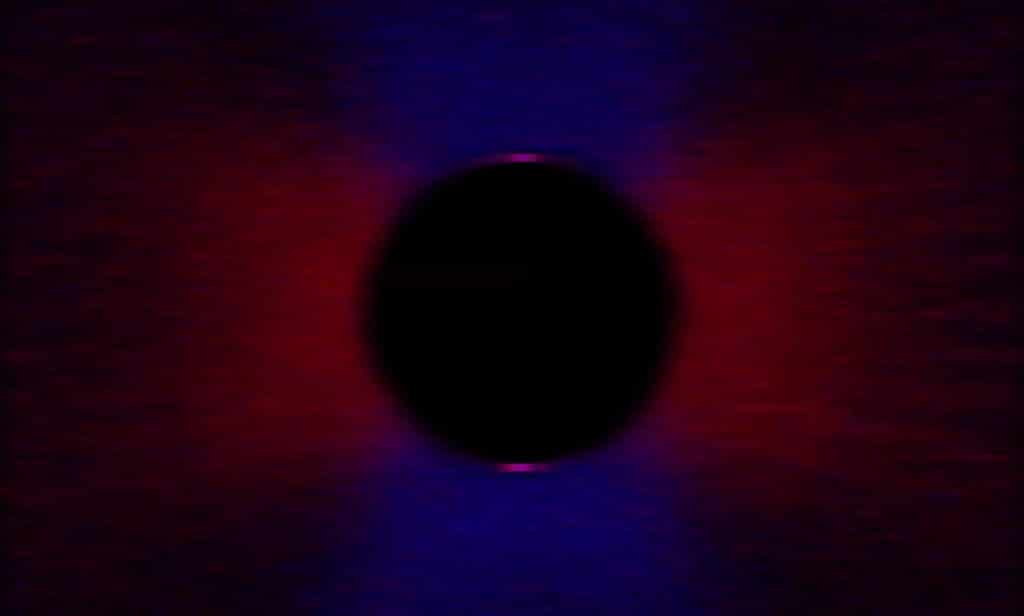
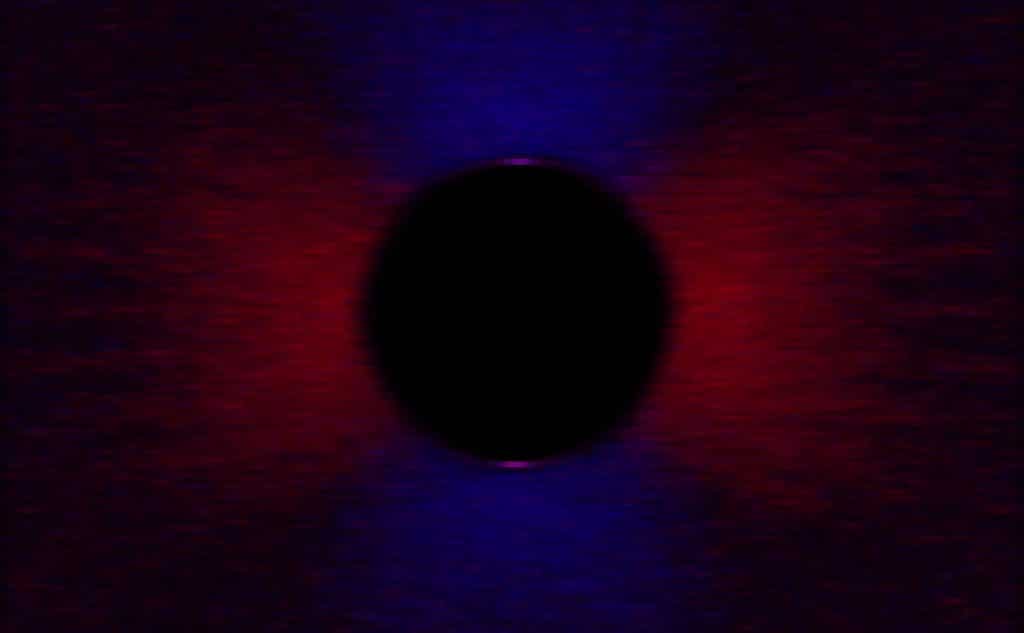
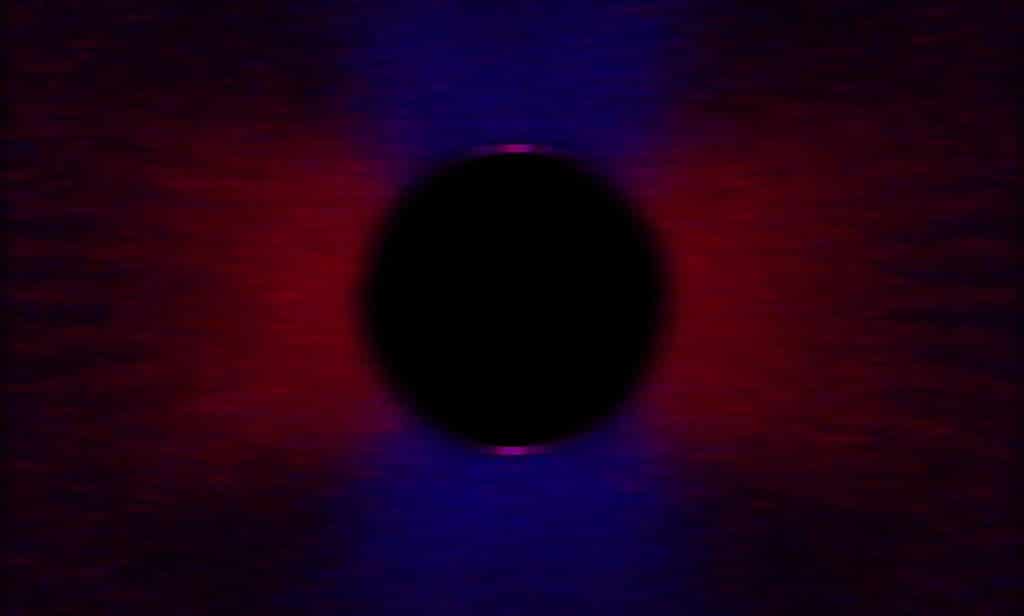
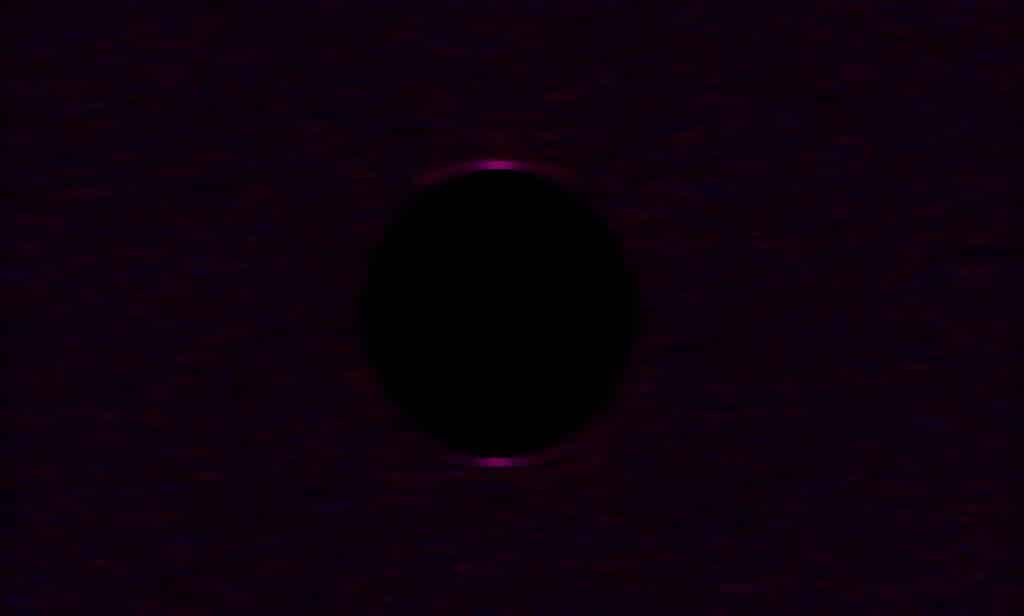
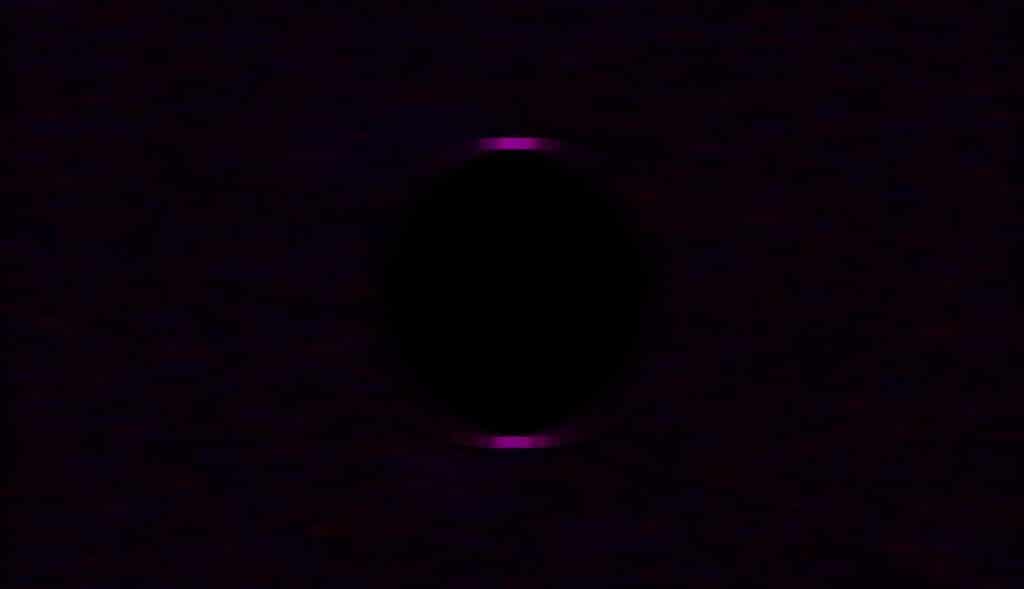
My conclusion: the a7III suffers from this defect about the same amount as the a7RIII and the a9, and a great deal more than the a7II and the a7SII. Since there have been few complaints (but not zero) about the a7RIII and a9 PDAF striping, I don’t think this is a big deal.
We can be a bit more quantitative:
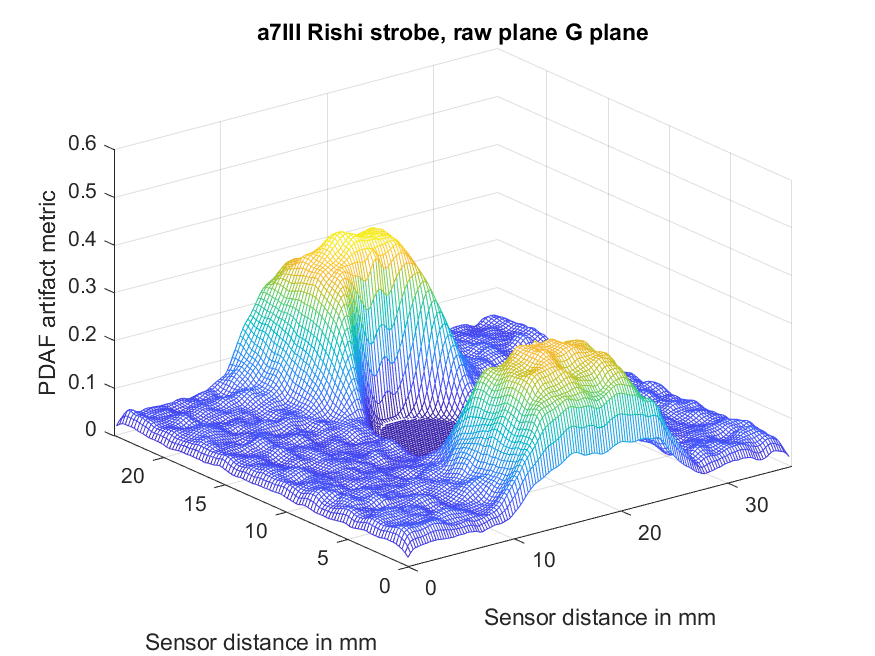
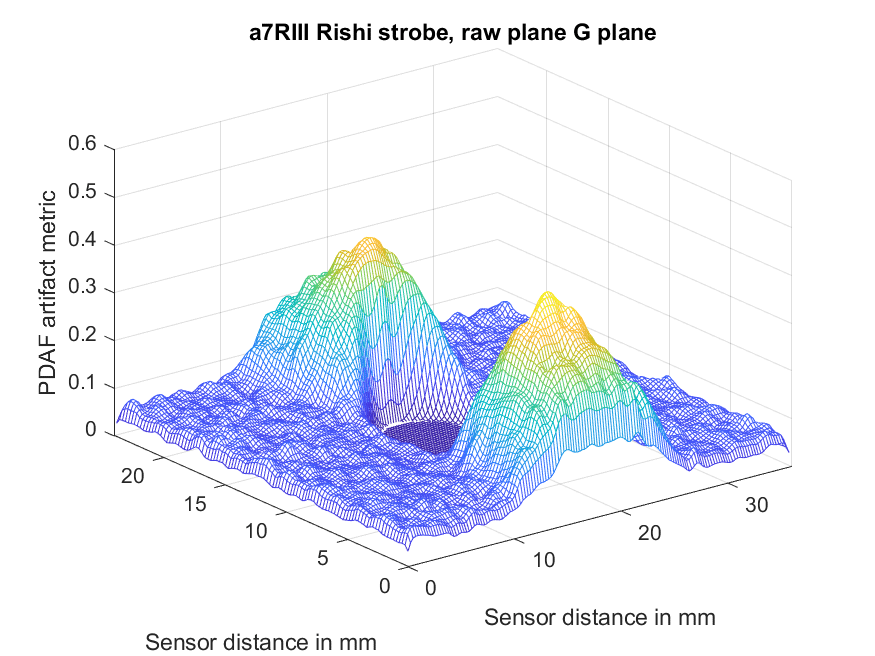
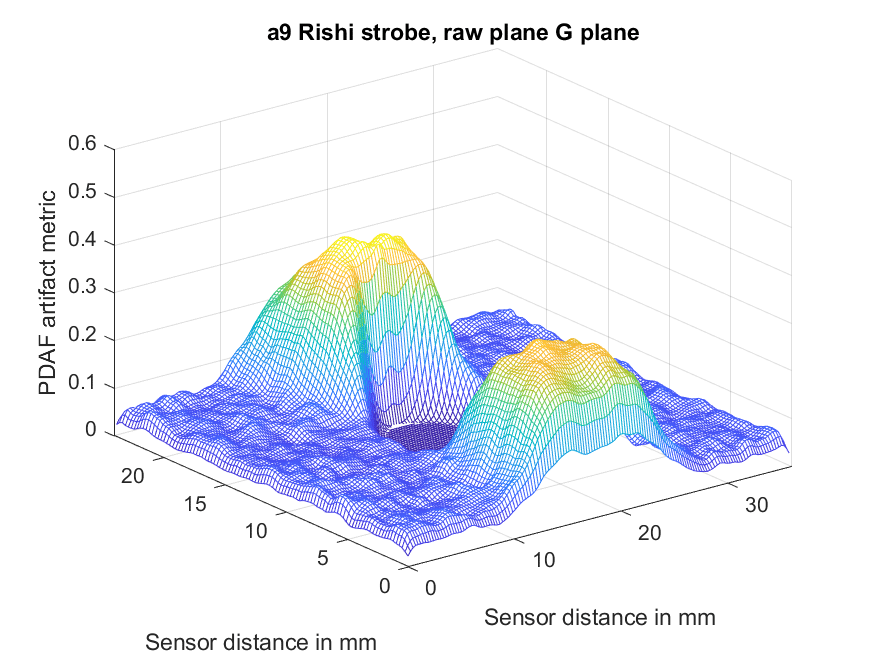
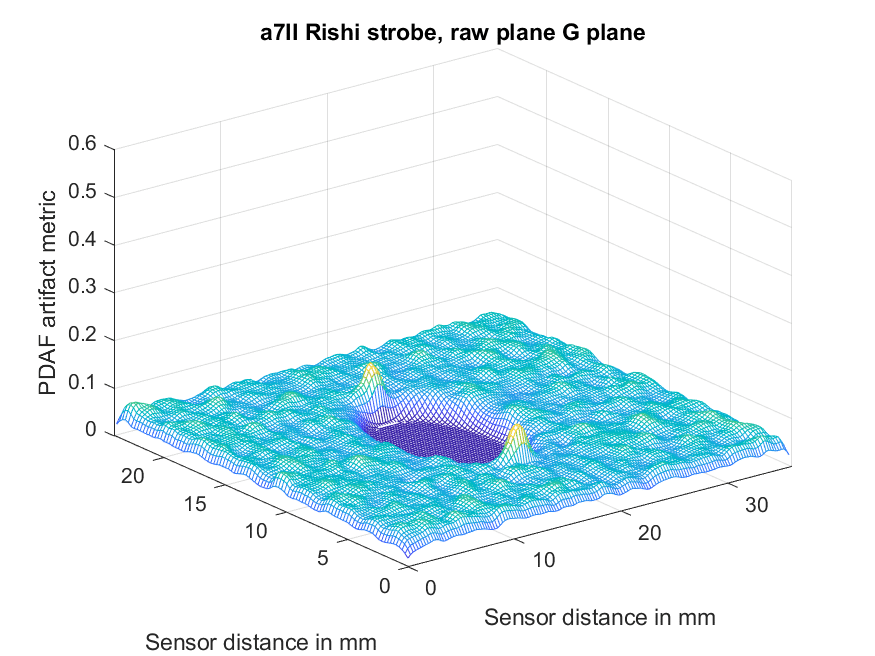
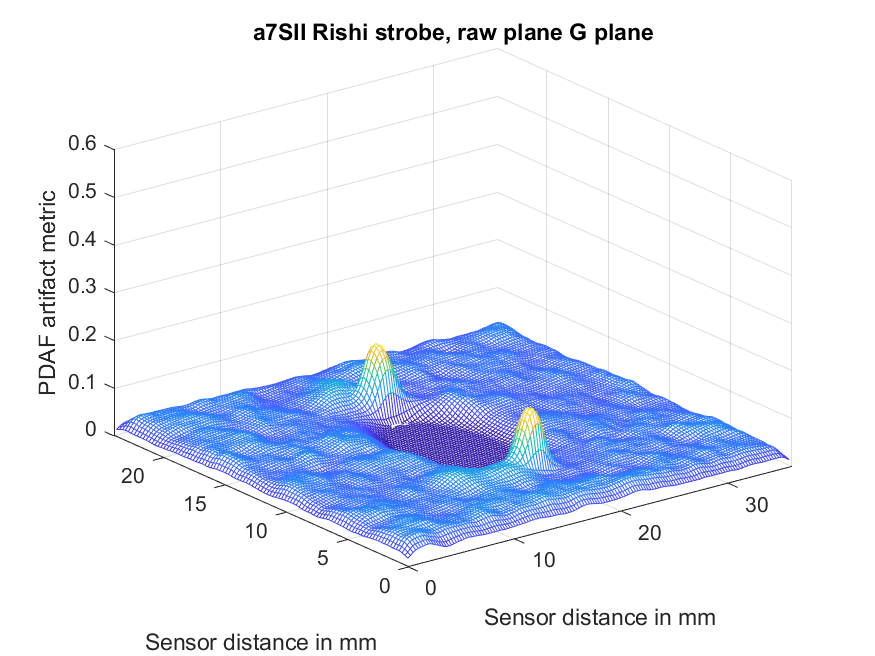
Not a lot of difference among the a7III, a7RIII, and a9.
There’s not much to see in the red raw planes, so I’ll spare you those. I’ll also ignore the a7II and a7SII from here on in.
The other green raw plane:
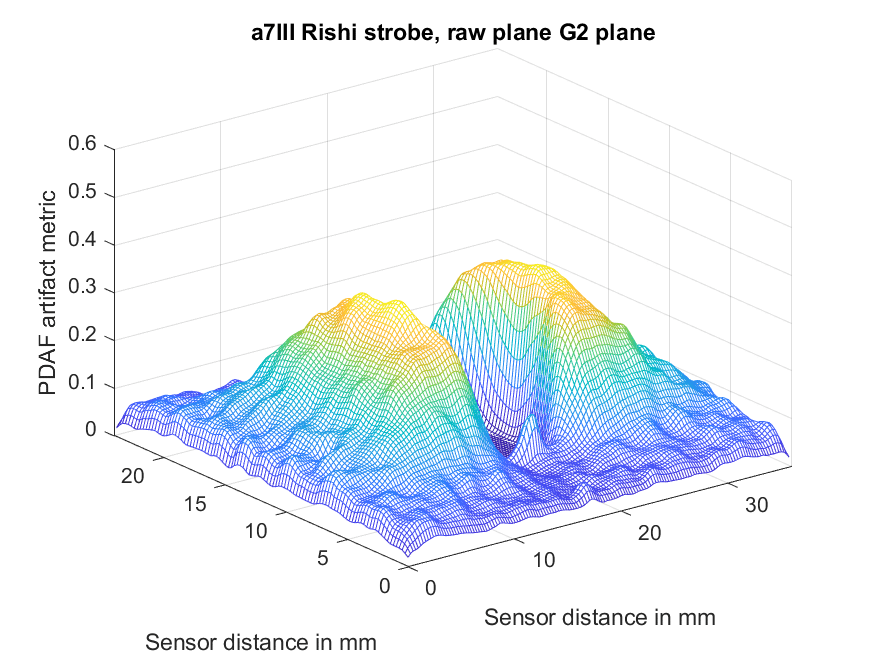
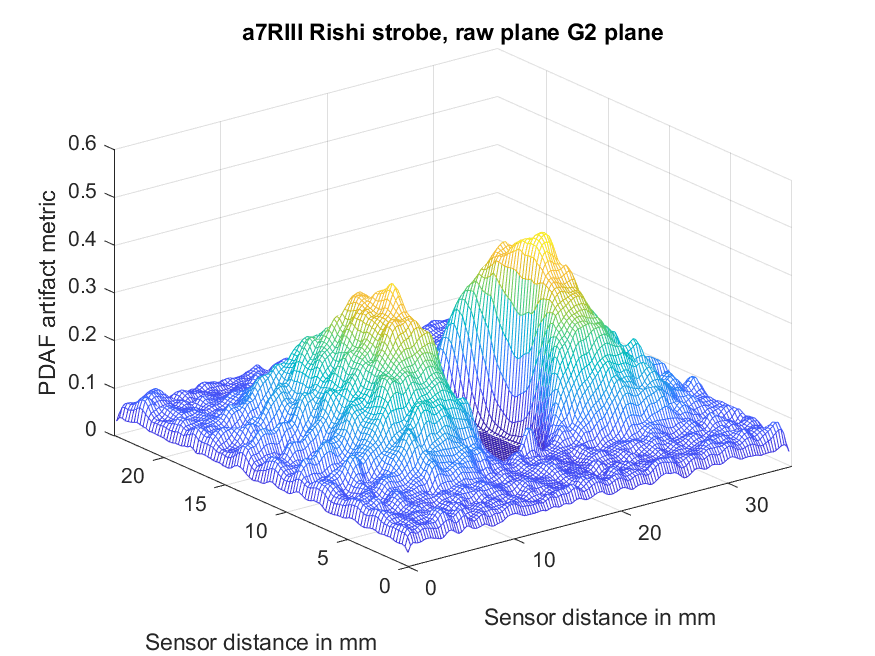
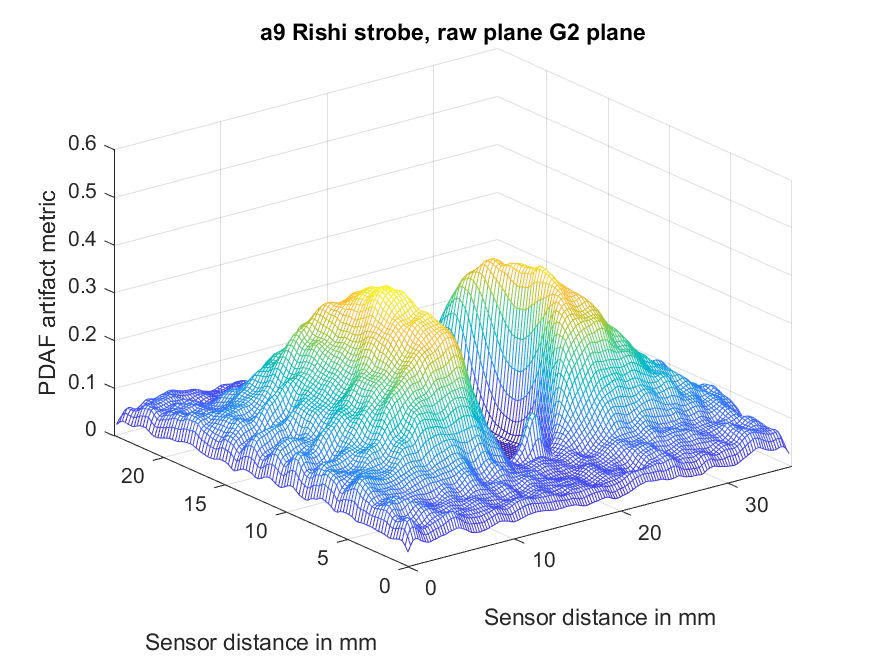
The a7RIII is slightly better.
The raw blue planes:
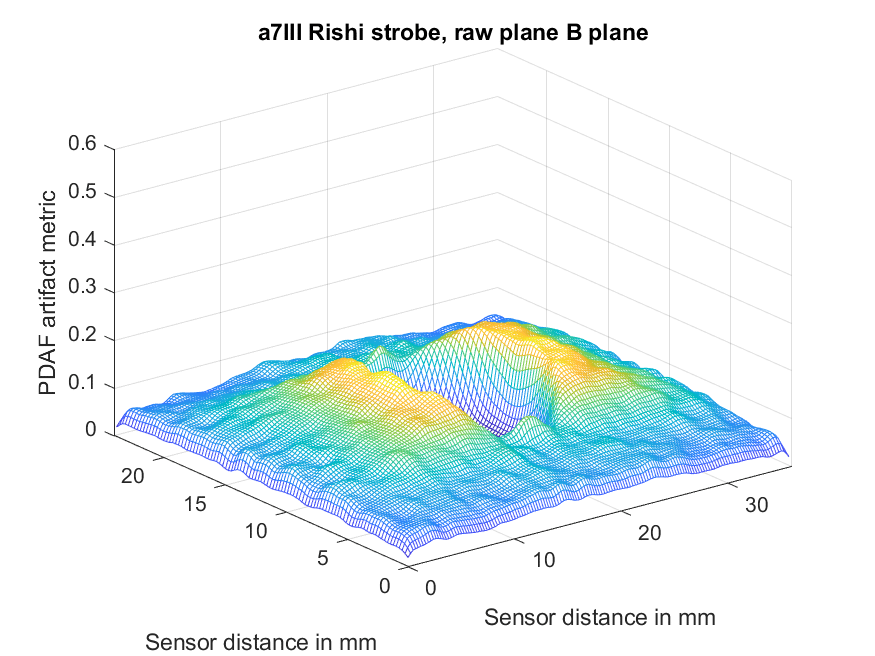
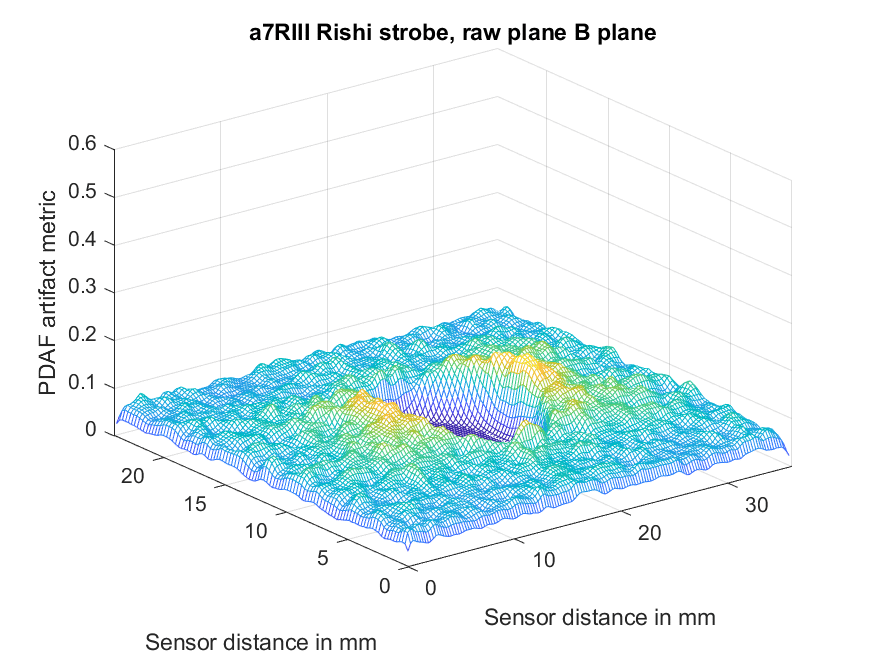
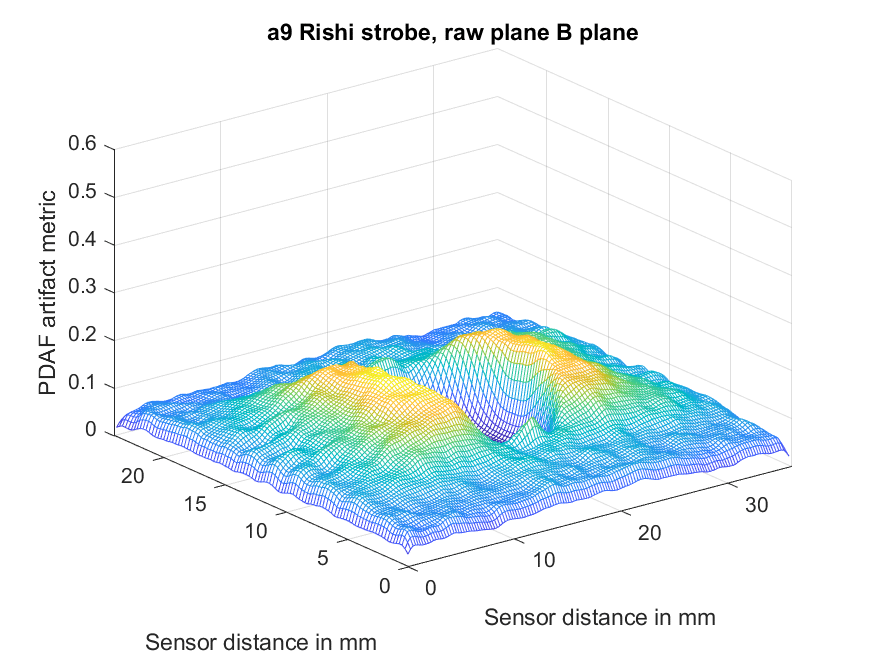
Again, the a7RIII is a bit better. Rishi thinks that’s because it’s got more rows, but not more PDAF pixels. That sounds good to me.
In any event, I think this effect, while real, is something that will not damage images in most all a7III use cases.
CarVac says
Isn’t the A7ii supposed to have phase detect? Why is it completely immune?
Joe Fizer says
I am confused. What are you photographing and how will this effect my day to day shooting?
JimK says
Rishi was photographing a studio LED light.
Hard to say, at this point. Do you shoot into bright lights a lot?
Joe Fizer says
Sometimes doing street shooting at night.
JimK says
Have you seen any issues, now that you know what to look for?
ZaltysZ says
Can it be it is not solely PDAF related, but BSI+PDAF? Hence A7II being immune despite having PDAF.
Cliff says
a7ii has 117 PDAF points, a7Riii 399, while a9 and a7iii 693 That may have something to do with it, although BSI certainly is a variable.
a6300/a6500 have 425 points on an APS-C sensor. If PDAF points are the culprit, it seems with the smaller sensor and resulting higher density of points it would stripe worse than the ff cameras.
These cameras, and other Sonys also have varying numbers of on sensor CDAF points. Is there a reason they are not under consideration?
JimK says
CDAF pixels do not require masking nor interpolation, and seem to be unrelated to what we’re seeing here.
Cliff says
Thank you, and density on the a6300/a6500 fall below the a8/a7iii, they’re just smaller. Duh, my bad. Still, there are enough of them that testing one might illuminate the question of BSI causation.
Simeon Kolev says
I am curious about the A7rII because until now the only camera with serious problem was the A6000. It was so easy to create stripes with any lens. I have never seen this effect with the A7rII and A7rIII. I will test them more these days. Maybe with the Lens Turbo II adapter it will show it in real life much easier since the adapter rear element is pretty close to the sensor.